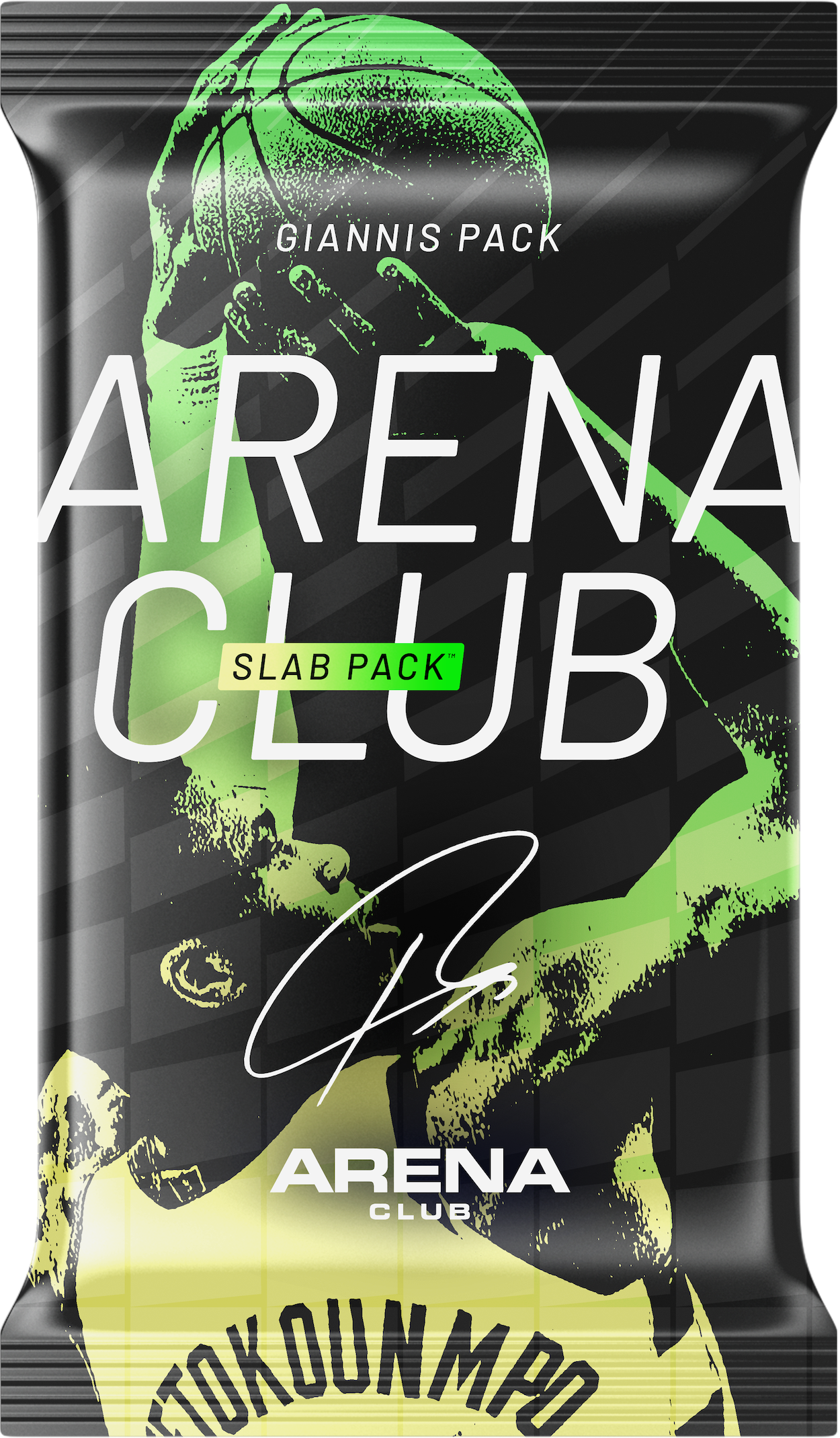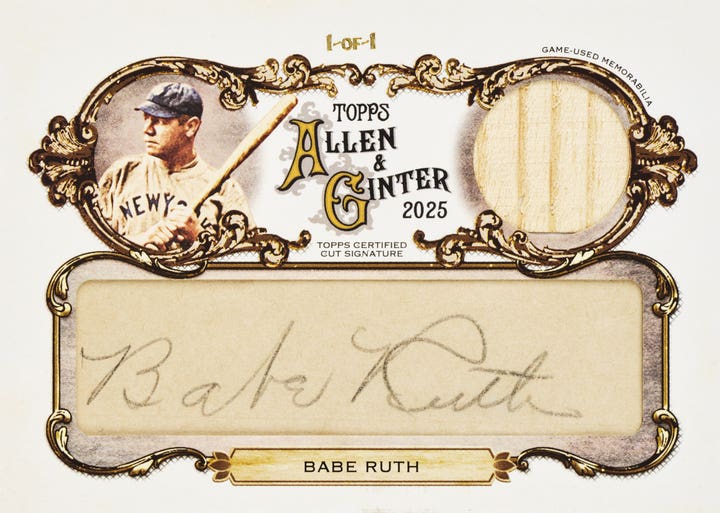Vintage Card Sets
Vintage Inserts Take Hold in Card Collecting Community
By Reid Creager
As the 1961 baseball season dawned, the stage was set in New York for a one-on-one slugfest that would change history.
It wasn’t Mantle vs. Maris. Brooklyn-based Topps was feeling the heat from new rival Fleer, which made a splash in the baseball card market with its 1959 Ted Williams set and subsequent 1960 Fleer Baseball Greats – as well as with its 1960 football set. (In 1963, Fleer would produce a 67-card set featuring active players that ratcheted up the stakes some more and eventually led to a series of legal battles.)
Fleer’s 1960 efforts included inserts: Team logo decals for baseball, and AFL team decals and college pennant decals for football. Topps counter-punched with its first-ever inserts – 1960 metallic football stickers, followed in 1961 Baseball with a 36-count Magic Rub-Offs set in Series 1 packs, and two-stamp panels (208 stamps overall) in Series 2 and higher.
Suddenly, it wasn’t enough to sell packs with just a handful of baseball cards and a stick of gum. Through 1971, kids opening packs would always get a bonus. This led to much insert brilliance and missteps, virtually all of that by market dominator Topps.
Those inserts’ popularity fluctuated in the 1960s and early ’70s, as they do now, due to factors ranging from attractiveness to difficulty in completing the set. But many collectors who’ve completed the typical 2½-by-3½-inch base sets of cards are looking for new challenges, especially as baby boomers have grown in numbers and purchasing power. Add the fact that many vintage inserts boast low-population numbers in high grades because their production volume was dwarfed by the base cards, and it’s the perfect storm for these issues to take off.
The next logical step?
If anyone understands the challenge of chasing the harder-to-find cards, it’s Chandy Greenholdt. The Lewisville, N.C.-based owner of Season Ticket Sports Collectibles set up at the 2014 National Convention the way he always does: Surrounded by bins teeming with oddball inserts, as well as little-known regional cards and publications.
He said the gravitation to vintage inserts is a natural progression for many.
“It’s just sort of a standard trend in the hobby – which is, people start out buying what I would call mainstream stuff that’s actually pretty easy to find. After a while, they’ve got all that and so they have no other worlds to conquer.
“So that’s when they go to the odd stuff, which is a lot harder to find and much more challenging. And people who are into collecting will tell you that’s what most of them are looking for: A challenge.”
Relative scarcity is another important draw. Unlike the base cards, inserts came one to a pack. Some were designed to be stuck, rubbed or ironed on something back in the day, which further limits their numbers now. Last but not least, millions of kids who opened packs in the 1960s and ‘70s would consider the inserts extraneous and routinely discard them.
Paul Korst, owner of Stampcards in Willoughby, Ohio, said this perception of inserts as an afterthought can result in some pleasant surprises.
“One time I bought a big lot of football cards in an auction. It was an online thing, so I couldn’t see all of them. In the auction, all it said was ’60s football inserts. So I get this big lot and there were 55 1964 Topps AFL and college sticker inserts.
“When I went to look those up, a set of them (32 total) were worth as much as the football set of 176 cards because people typically threw them out – or they stuck ’em on something, and that’s where they stayed.”
Greenholdt recalled the ultimate windfall – vintage inserts for free.
“I remember probably 15 years ago I went to someone’s house to buy some cards. When I got done, we made the transaction, I walked past a trash can and it was full of non-sports cards and oddball inserts.
“I asked him why they were in there, and he said, ‘I didn’t think anybody would want these.’ I said, ‘Well, could I have them?’ He said, ‘Sure, you’re welcome to them.’ I ended up fishing maybe four, five hundred out of the trash can.”
What’s selling, and not
Several dealers at the 2014 National said demand is fairly steady for vintage inserts, regardless of the sport. Baseball and football lead the way, in part because Topps went 12 years without producing basketball cards, and hockey is seen by some as a regional sport.
Jack Kerekes of Jack’s Cards in Broadview Heights, Ohio, said he gets a lot of interest in baseball’s 1965 Topps Embossed and the ’66 Topps Rub-Offs. The gold foil fronts make the embossed cards prone to chipping, which can either be a drawback or an attraction depending on the individual collector’s hunger to collect rarer, high-grade specimens. The ’66 rub-offs, colorful and featuring many Hall of Famers, often have centering problems.
Other dealers said the ’65 embossed and ’66 rub-offs weren’t doing much. But several agreed on the popularity of ’65 Topps Transfers, crude drawings that were inserted into high-series packs.
Until as recently as last year, interest was tepid for them on eBay; now sellers routinely ask a minimum of $20 for ungraded commons.
“The ’65 transfers, I sell as fast as I can get my hands on them,” Greenholdt said. Kerekes agreed that the paper iron-ons “are impossible to find – mainly because they’re very brittle and they fell apart. People threw them out.”
The transfers are notorious for bad centering, paper wrinkling and creasing. How notorious? As of Jan. 24, only 40 of the set’s 767 submissions to PSA came back an 8 – with only one 8.5 and two 9s. A PSA 4 Mickey Mantle transfer sold for $220 on eBay on the last day of August 2014 (a lone PSA 7 is the highest one ever graded). Six days earlier, the regular-issue 2½-by-3½ Topps Mantle, also in a PSA 4, went for $135.
But collectors don’t show consistency when it comes to the popularity of paper inserts. Whether it’s the 1967 Topps Baseball posters, the 1968, ’70 or ’71 Topps Football posters or the 1970 Topps Basketball posters. The roughly 5-by-7-inch inserts don’t typically draw a lot of interest even though many are very colorful and dramatic.
Maybe it’s the unconventional size; maybe it’s that they’re fairly abundant. Regardless, Kerekes singles out the ’67 Baseball posters as “not very popular at all, because they came folded and split easily at the seams.”
A possible exception to the paper aversion is 1969-70 Topps Basketball Rulers, which feature illustrations of the era’s stars. As recently as 10 years ago, these odd-looking, 2½-by-9-7/8 issues (with drawings that sometimes don’t resemble the players) drew little interest from collectors.
But interest picked up, possibly because they were part of Topps’ return to basketball after its 12-year hiatus and therefore include many “rookie cards.” Also, because the rulers are relatively scarce and fragile – with low-population numbers in high grade – clean, ungraded issues of even second-tier stars can sell for $15 and up. In June 2014, a ’69 Lew Alcindor rookie in PSA 9 (population seven) sold for $550.
The 1964 Topps Coins often report healthy sales, especially in high grade. Many dealers and collectors feel this is among the most attractive inserts ever produced, featuring the rich red and blue All-Star coins with the great photography.
But Korst says not to sleep on the ’71 coins.
“You know what’s weird? I think more people are looking for the 1971 coins than the ’64 coins. For a while, I had a hard time getting those. People were asking for them but I only had a handful of them.”
Football under the radar?
Vintage football inserts may benefit from the fact that in the 1960s and ’70s, baseball was king among fans and collectors. So there aren’t as many football inserts out there to begin with.
Several dealers reported strong activity for late 1960s football inserts, led by 1969 Topps 4-in-1s, and the ’70 glossy.
“Late-1960s football inserts may be more popular because they’re a little easier to get,” Korst said.
Greenholdt adds that “some of the stuff that was issued in the AFL packs that Topps did, like in ’65 with the team logo emblems, they’re very popular. Fleer college pennants (1961), too.”
The 1968 Topps team logo patches are probably the scarcest vintage insert from either baseball or football because they came in packs of a test issue – the ’68 Topps black-and-white team cards. In addition, many of the logo patches are off-center.
As of late last year, not a single PSA-graded ’68 team logo patch was available on eBay. Most recent sales included a Detroit Lions PSA 8 patch (population four) in mid-July that sold for $263. In mid-August 2014, a complete set of 44 team logo patches sold at a Mile High auction for more than $1,900, including the buyer’s premium.
“I think the football ones, especially the pricier ones, are a little harder to find buyers for,” Korst said. “But they come along eventually.”
Ripe for slab hounds
Vintage inserts can be a gold mine for “low-pop” chasers – either now, or down the road. They’re 40-50 years old, there’s plenty of material to search for and many collectors remain focused on completing the older base sets in high grades, so they don’t pose any competition.
Single-player collectors of graded issues also feel the lure. Roberto Clemente collectors just looking for a clean copy of his 1963 Topps Peel-Offs insert might be surprised to learn that a PSA 9 example sold for $625 in 2014 – and that there are only seven 9s. That same month, a PSA 9 Willie Mays peel-off sold for $302, probably a great deal because it was a 1-of-2.
While many Brooks Robinson collectors hunt for a Mint copy of his regular-issue ’71 black-bordered card, even some insert collectors may not know his ’71 Topps coin is very hard to find centered and in high grade: population 2 in a PSA Mint 9.
This scarcity extends to many commons, of course – increasing the possibility that you can get a high-grade example cheaply and profit from it later.
Whether the intention is grading or not, “Demand is pretty steady” for the older inserts, Korst said. “I don’t see why that would change. People love inserts. If I can get my hands on inserts, I buy them.”
Reid Creager is a freelance contributor to SCD. He can be reached at reidcreager@yahoo.com.








